For fans of the Scottish Women’s Premier League 1 (SWPL 1), 2022/23 will go down in history as one of the most exciting seasons in recent memory, with the title race and the fate of the two Champions League places both in the balance on the final day and all three of Glasgow City, Celtic Women and Rangers Women in with a chance of lifting the trophy and of featuring in Europe this season.
In the end, it was Glasgow City who secured their 16th top-flight title and Celtic who joined them in Europe, and it was a disappointing end to Rangers’ campaign and saw Malky Thomson’s final season as their head coach end empty-handed.
Whilst Thomson will be forever remembered among the Rangers faithful for the 2021/22 season, when he delivered a first-ever top-flight title in the club’s history and a subsequent taste of European competition last time out, there is also a general agreement that performances overall previous season were not what was expected, with them picking up six draws after struggling through some games and always seeming to be a step behind their two title rivals as a result.
For that reason, the chance of bringing in some fresh eyes to spark the team back into life was one that the club seemed to relish, and the appointment of former England midfielder Jo Potter showed their ambition to reinstate themselves as genuine title contenders.
After just six matches of the new season, it is fair to say that the decision to bring Potter to Broadwood Stadium has so far paid off, with her tactics taking the club to the top of the table (albeit having played a game more than Glasgow City and Celtic, due to their Champions League qualifiers) and seeing them play attractive attacking football that is producing results.
This tactical analysis will take a closer look at her style of play, identifying first what Rangers were doing last season and then picking out the differences she made to their play. The scout report will also show why her tactics have yet to convince everyone in the stands but why staying with Potter and retaining patience as the team adjust to her methods is the right thing to do.
Under Malky Thomson
As mentioned, Thomson’s time at Rangers Women was far from a disaster, and there were plenty of positives for the team to take from his final campaign in charge, with them possessing a clear identity on the pitch and players understanding their roles and what was required of them both in and out of possession.
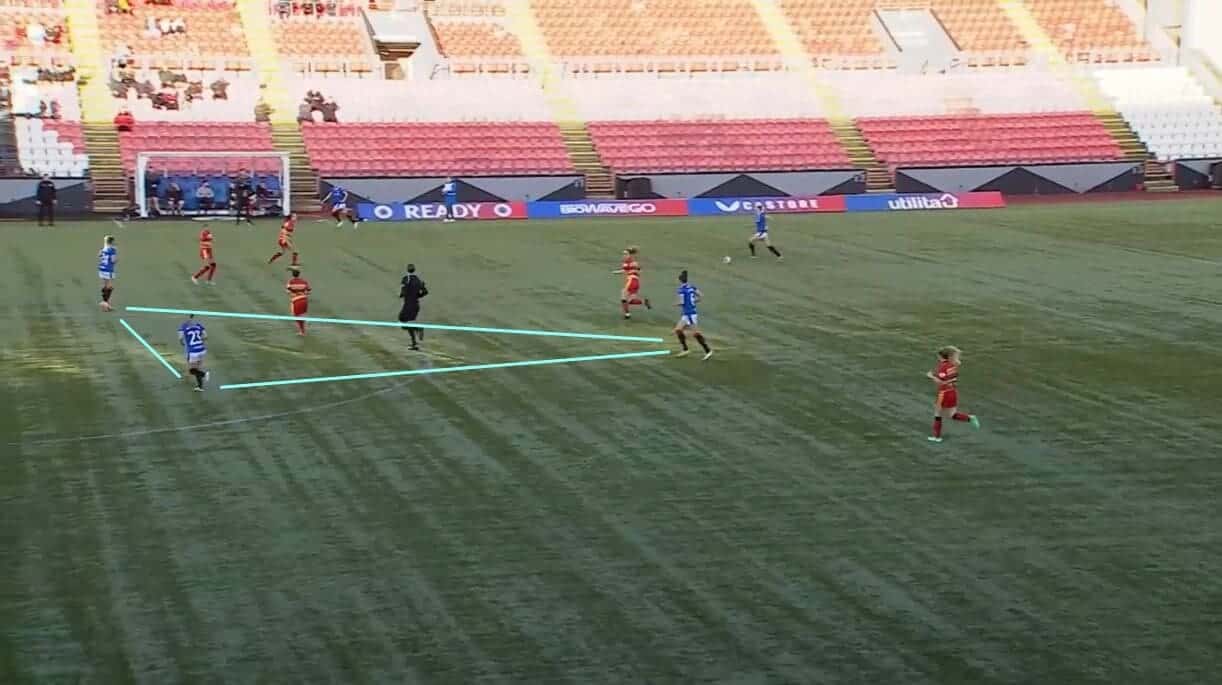
One prevalent feature of their play came in the midfield when they often set up with a triangular shape that was biased towards the attacking side of things. In this case, against Partick Thistle Women, the setup sees former West Ham United Women player Tessel Middag at the base and Scotland duo Kirsty Maclean and Sam Kerr, the latter of whom joined Bayern Munich Frauen this summer, ahead of her.
The first thing to mention with this is that it gave Rangers distinct passing routes that they could use when progressing the ball through the central third, and the fact that they averaged 65.49% possession last season shows how that played a valuable role in allowing the team to dominate matches and to control the flow of play.
It also allowed Rangers to have defensive cover in front of the back four, with the player at the base of the triangle usually someone who was comfortable slotting in when there was a need to do so to slow opposing counterattacks down.
Middag is the perfect candidate for this, given that she has always worked closely with the backline at each of her clubs. So that transition was often seamless and allowed Rangers to make it difficult to score against them (they only conceded nine goals in the league in 2022/23, the best record in the division).
It also allowed them to distribute from deep when playing through the thirds wasn’t an option, with the player in the pivot role often tasked with sending direct passes forward in those scenarios and catching opposing defensive lines out.
That meant that the two in front could focus primarily on supporting their attacks and on offering passing options higher up the field, mainly slotting into the half-spaces left open in their favoured 4-2-3-1 formation (used in 44% of their league outings) and ensuring that Rangers could make the most of the time that they spent inside the final third.
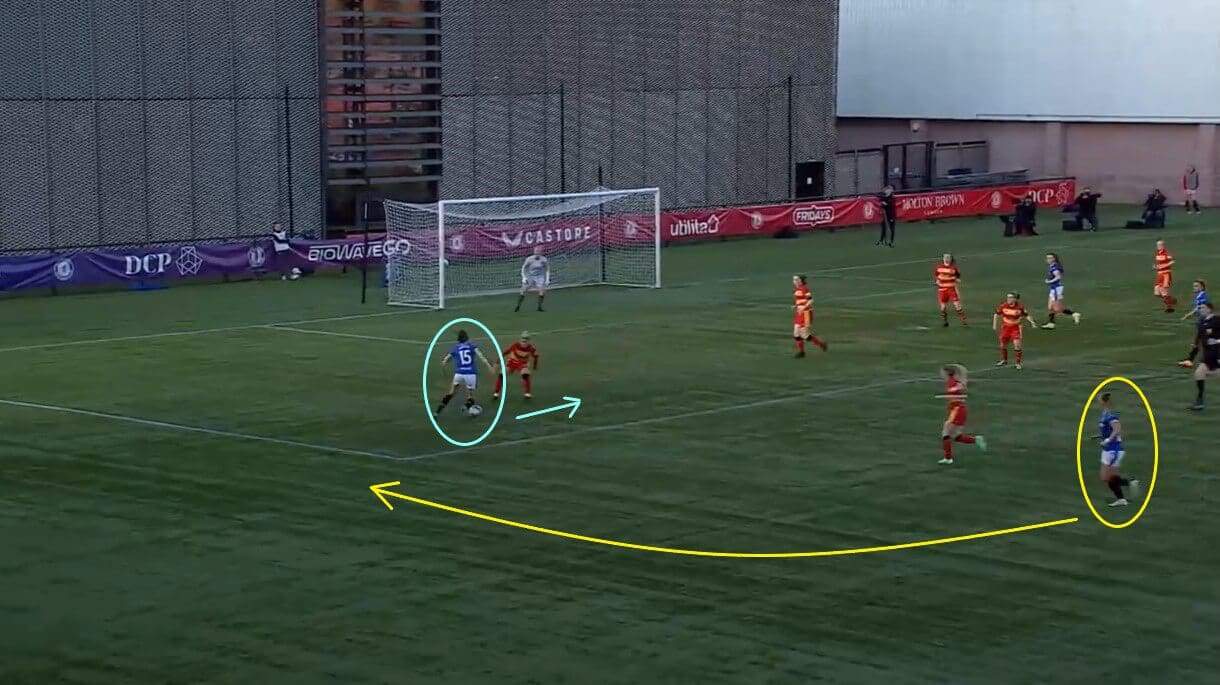
The Rangers needed a solid defensive midfielder in their formation because Thomson encouraged the full-backs to push as high up the field as possible whenever the team had the ball.
This was to allow the wingers the opportunity to cut inside the pitch and to support the striker in offering a central threat, just as former Manchester United Women attacker Lizzie Arnot is doing here by taking on Partick Thistle’s Clare Docherty in a 1-v-1 battle.
The reason that Arnot can make this inverted run is because Maddie Nolf, who played at left-back in this game, was behind her and covering her, with the American moving to the outside here to give Arnot the freedom to drive towards the middle without leaving the wing area open and unoccupied.
It was not only on the left that this partnership between the full-back and the winger was apparent, with the same happening on the right, too, and that shows again how it was another vital aspect of Rangers’ tactics under Thomson and was something that allowed them to create goalscoring opportunities from different areas of the field and to not only rely on the player leading the line to put the ball into the back of the net.
It is also important to note that it wasn’t only the wingers who were cutting inside, with the full-backs also making inverted runs as the season went on. That level of rotation made Rangers less predictable and, therefore, harder to contain, and that was why, even when results and goals weren’t coming for them, they still asked questions and were a very tough team to come up against.
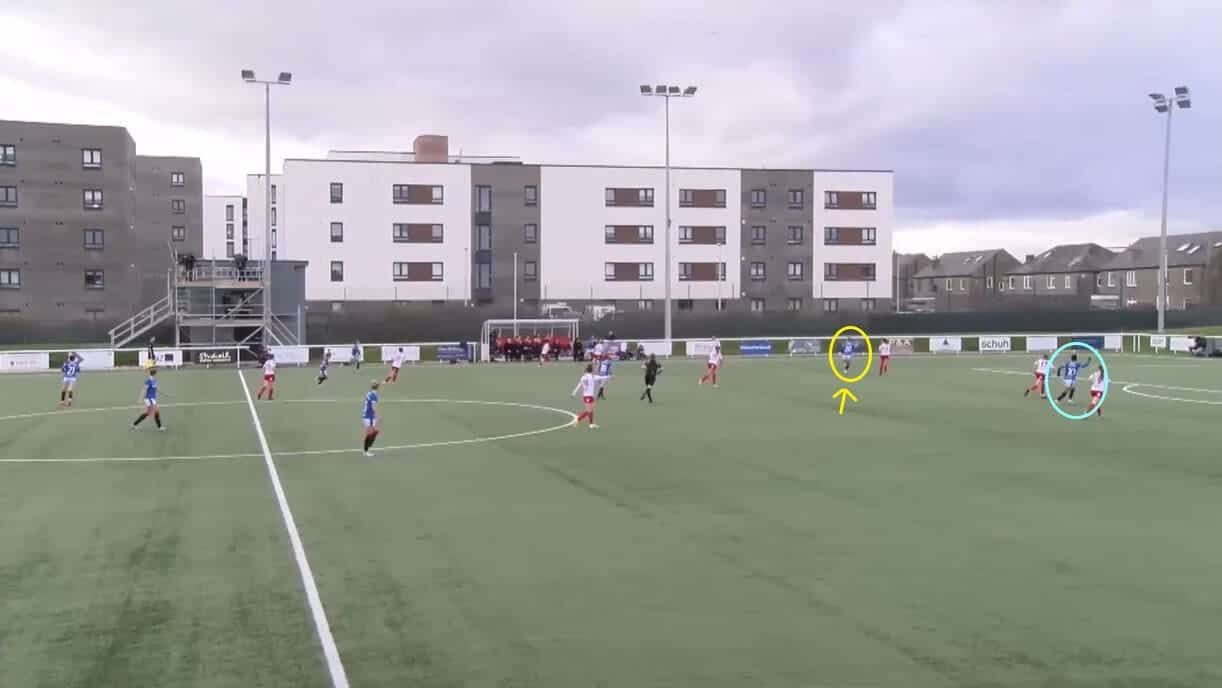
However, as mentioned, their attack was less potent last season, and a few areas of their play could have been improved in this game plan. One of those was that they wanted the wingers to get on the ball as centrally as possible yet set up with players in those positions who were more suited and more inclined to stay in the wide channels and deliver balls into the middle instead.
In this case, during the trip to Ainslie Park, Finland international Jenny Danielsson started in the middle but has drifted out towards the far side of the field, leaving Jamaica forward Kayla McCoy (now Kayla McKenna) alone in the middle and, therefore, easy for Spartans Women duo Robyn McCafferty and Ronaigh Douglas to team up against and to mark out of the game.
As a result, Rangers now don’t have a target player they can move the ball to, and, whilst this would be when the wingers would be expected to deputise, the simple fact is that Danielsson and others like Brogan Hay tended not to make those runs. With that in mind, it is not hard to see why Rangers struggled to convert their vast swathes of possession into goals in some matches.

As mentioned, Rangers did have the best defensive record in the top flight last season, but that doesn’t mean that they were perfect when out of possession, with their formation and tactics again leading to them making life more complicated than it needed to be on occasion.
The problems that they experienced were perhaps best shown when the ball was inside their third, with Thomson insisting on the full-backs moving out to slow opposing attacks down, just as Nolf has done here with her fellow American Hana Kerner during the final Old Firm clash of the regular season.
However, whilst this did work in that several opponents were unable to turn their progression up the field into a shot on goal, it also created a sizeable gap between the full-back and the remainder of the defensive line, and that was something that Celtic in particular were alive to and looked to use against Rangers as often as possible.
In this case, that was made even worse by Kerner evading Nolf’s tackle attempt and sending the ball into the middle, with now-Liverpool Women striker Natasha Flint, who scored eight goals whilst on loan at Fran Alonso’s side from Leicester City Women, having a chance to test her luck from close range.
Flint was different from the type of player that teams could afford to gift these chances to, and the concern would have been that if she could find these spaces, then anyone could. However, because of their setup, Rangers were seemingly powerless to prevent these opportunities from coming about, and that shows how there were limitations to Thomson’s tactics that perhaps contributed to them ending the campaign empty-handed.
New attacking structure
The task, therefore, for Potter after her appointment was to find a way of increasing Rangers Women’s productivity inside the final third and to ensure that those gaps at the back didn’t allow opponents to create simple goalscoring opportunities of their own against them, and the solution that she came up with was to introduce a wing-back system.
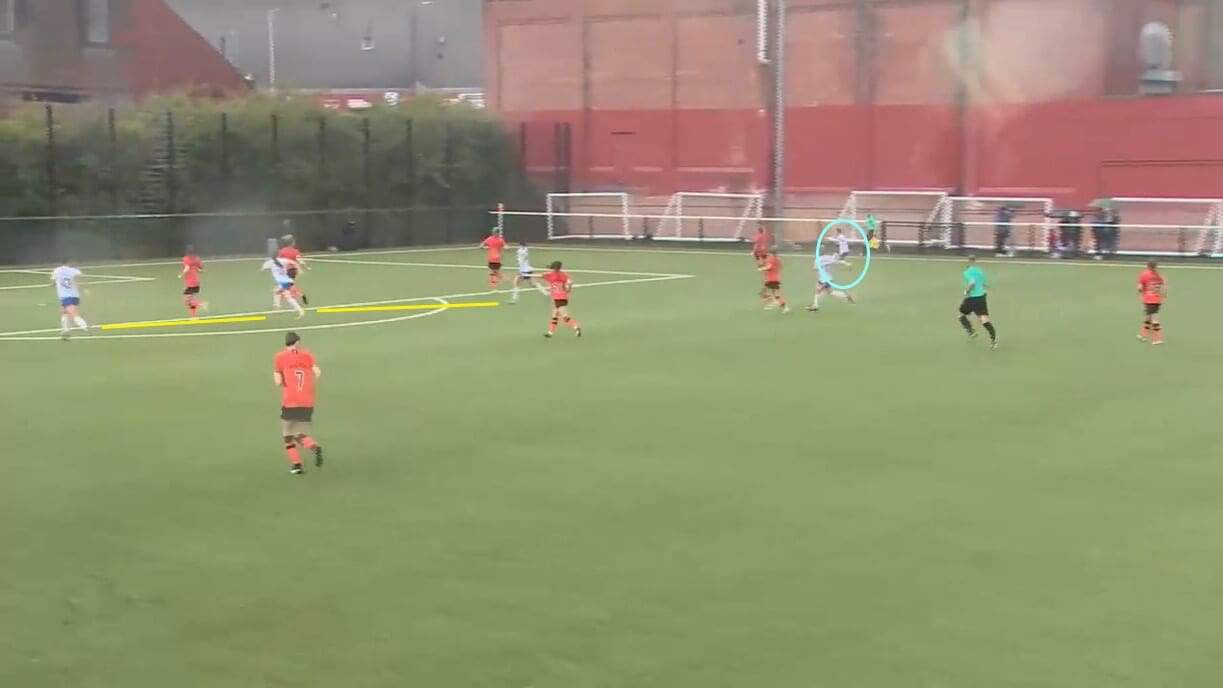
By moving towards this system and abandoning Thomson’s 4-2-3-1, Potter felt that her team would be able to retain their wider presence but would also pose a more significant threat in central areas, with the wingers now becoming inverted forwards and not relied upon to control the wide areas in the same way.
As a result, situations like this have become commonplace in their play, with academy product Jodi McLeary, who has tended to play as one of their wing-backs, in possession on the far side of the pitch whilst the trio of Kirsty Howat, Laura Berry and Rio Hardy are all positioned in the middle, waiting for the delivery to come in.
Neither is far away from the other, which shows the stark improvement that has been made to the team’s attacking play, with whoever is in the middle now having the support that they were looking for last season and the team overall having a better chance of converting their opportunities, with Dundee United Women possibly able to close off one player here but unlikely to contain all three successfully.
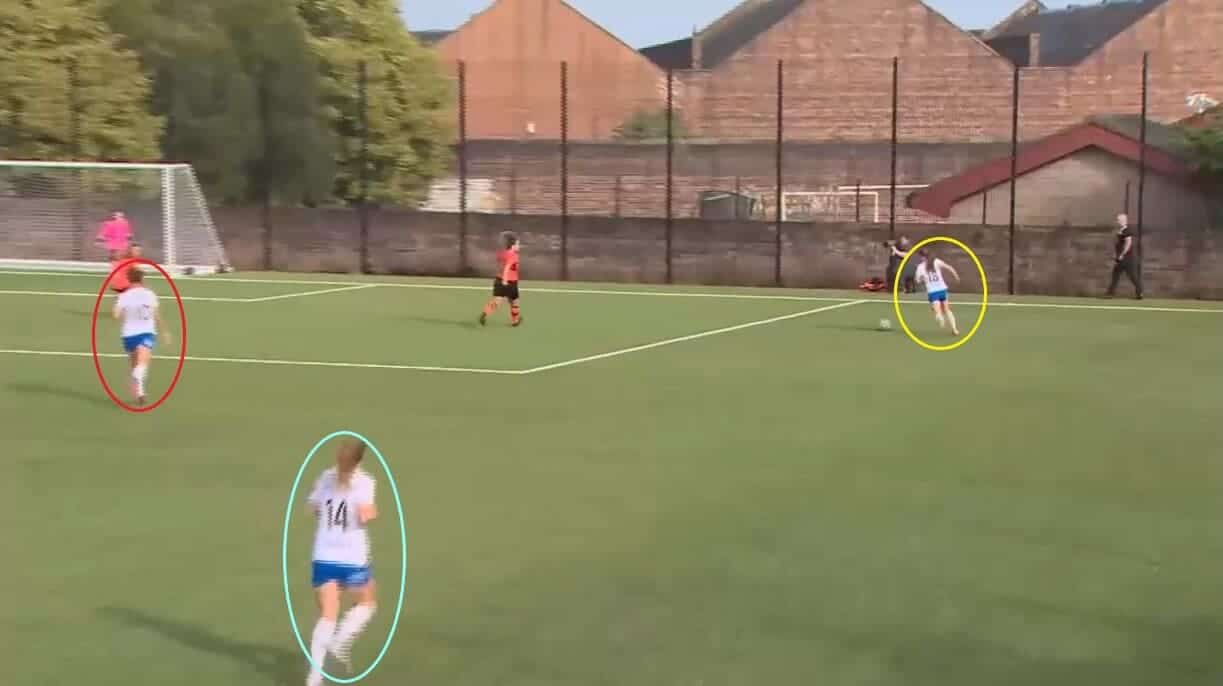
It was clear over the summer that getting more players into the middle was Potter’s intention, with her transfer business aimed at adding players who would naturally stay further inside the field and offer that support for the striker. One signing that has paid off for them is that of Hardy, who joined after a mixed Women’s Championship campaign with Durham Women but has looked back to her best since moving north of the border.
Her tendency to stay inside the pitch means that Rangers have had a slightly more 3D appearance this season to their play, with Berry on the goal line here, another academy graduate in Mia McAulay holding back, and Hardy waiting in the half-space for the ball to come to her. Compare this to the 2D feel that Rangers had last season, with the winger and full-back in the same areas, and therefore, these quicker passes are not as easy to make, and this is another positive that Potter’s style has had on their overall play.
On this occasion, it led to a goal for Rangers and Hardy, with her expertly curling an effort into the Dundee goal, and the fact that the former champions now have this ability to score from different areas of the field is again something that Thomson wanted to see, but that Potter has made possible.
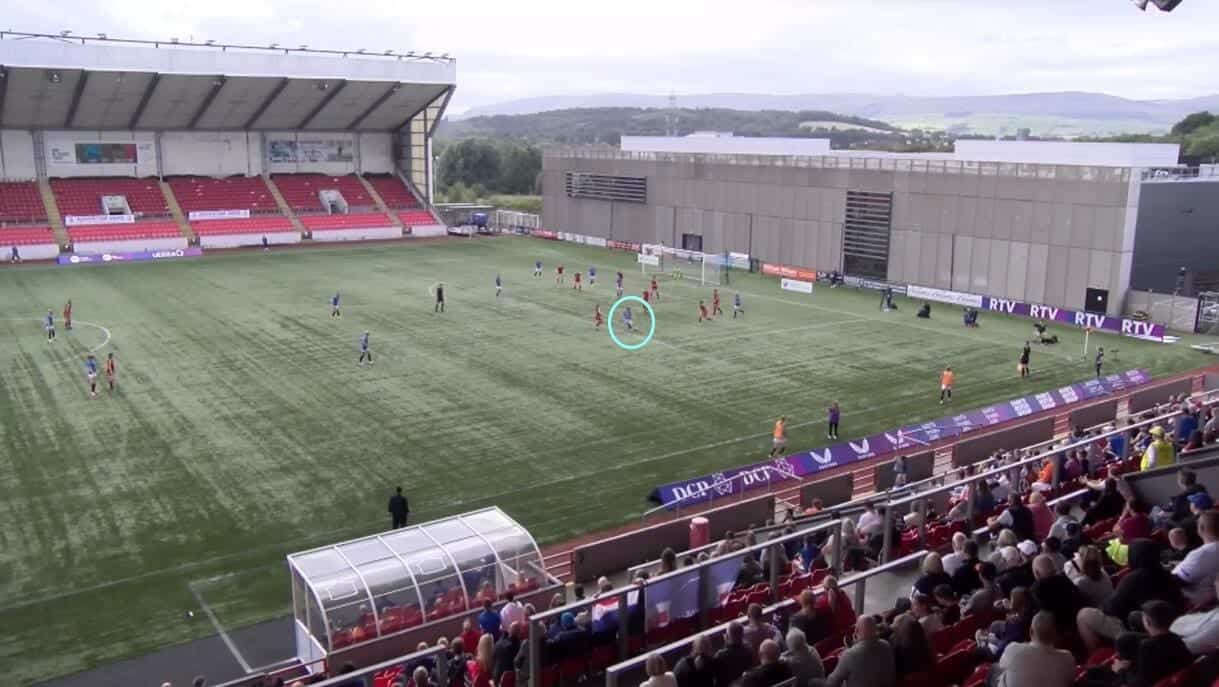
Another player who has really benefitted from the new attacking structure is Maclean; she mainly operated in the deeper six role last season and used her wide range of passing to launch attacks, while this season, she has been given more freedom to push further forward and to become more of a box-to-box player, connecting more of their play together and playing a vital role in the way that they have moved the ball around the field.
In many ways, her new role has seen her replace Kerr in the starting lineup, with the new Bayern Munich player who played between the boxes last season and was one of the most underrated players in the Rangers team. It has undoubtedly aided Maclean’s individual development to be handed the same responsibilities. It has led to her getting into positions like this when she found the Aberdeen Women net to extend her side’s lead further.
Maclean’s form this season has not gone unnoticed, with her earning a call-up and first appearance for Scotland back in July, and there is little doubt that she has had a significant impact on Rangers’ increased potency in the final third, with them averaging five goals per game this season compared to 3.47 in the last one.
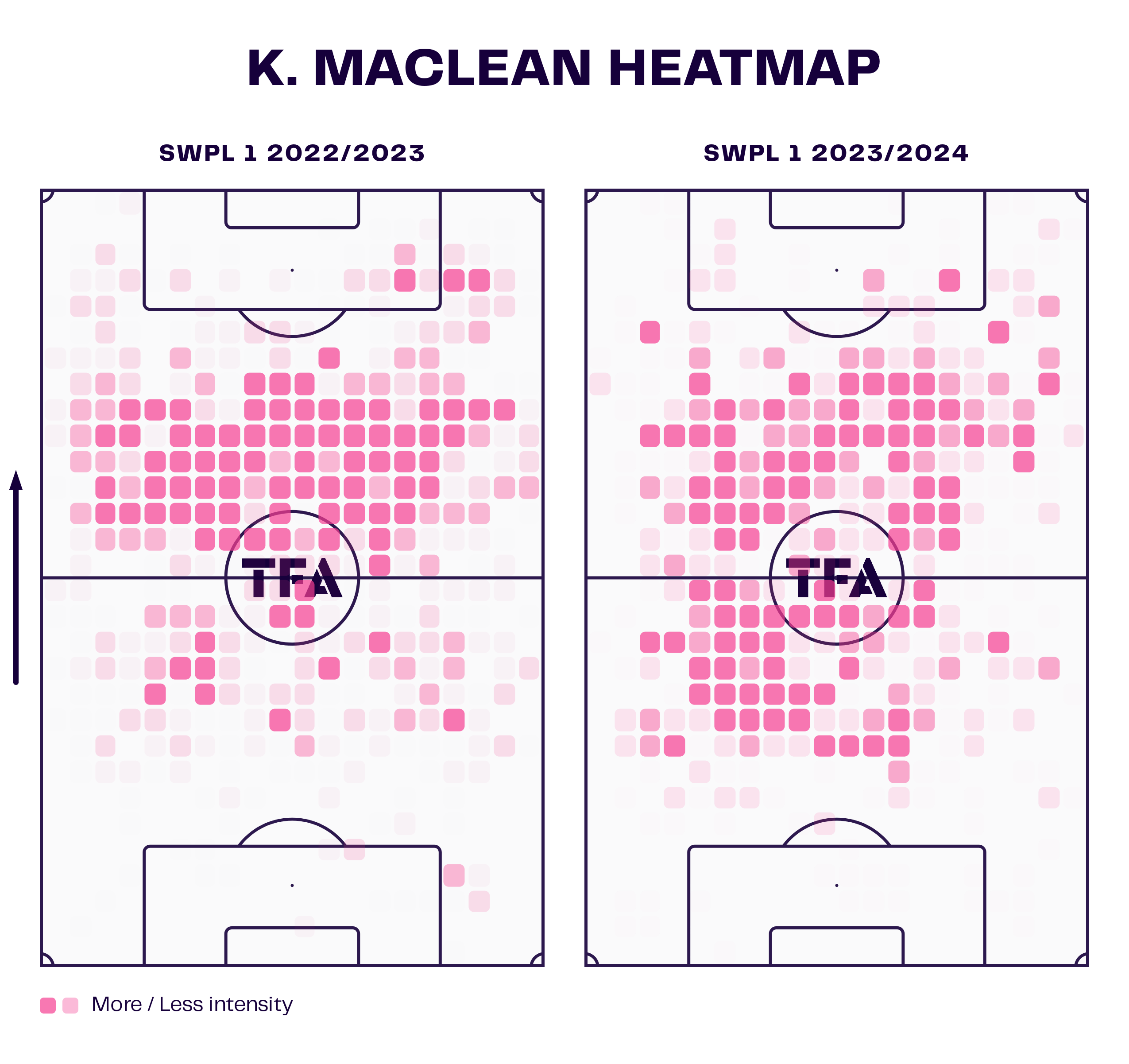
When looking at her heatmaps for both campaigns, the difference is clear to see. This season, she’s not needed to move towards the wings as much due to the presence of the wing-backs, so has been able to play much higher and drop back into deeper positions; this is a different role to the one that she had last season.
However, it has allowed her to increase her individual productivity and demonstrate an alternative side to her game, which she has relished, with her last season only having 20 shots on goal in all SWPL 1 matches, picking up two goals and five assists, but already having 11 shots this time around and registering one goal and six assists.
Therefore, the increased attacking threat in her game is clear to see, and the fact that there is still a long way to go in the 2023/24 campaign means that these numbers will only continue to grow, and defences will never be able to rest whenever she has the ball.
Moving to a back three
When it comes to the defensive side of things, the switch to a wing-back system has allowed Rangers Women to play with an extra defender in their backline, which has really benefitted them so far as it has enabled them to close off the gaps that were highlighted earlier in the analysis and to make it generally more complicated for opponents to break them down.
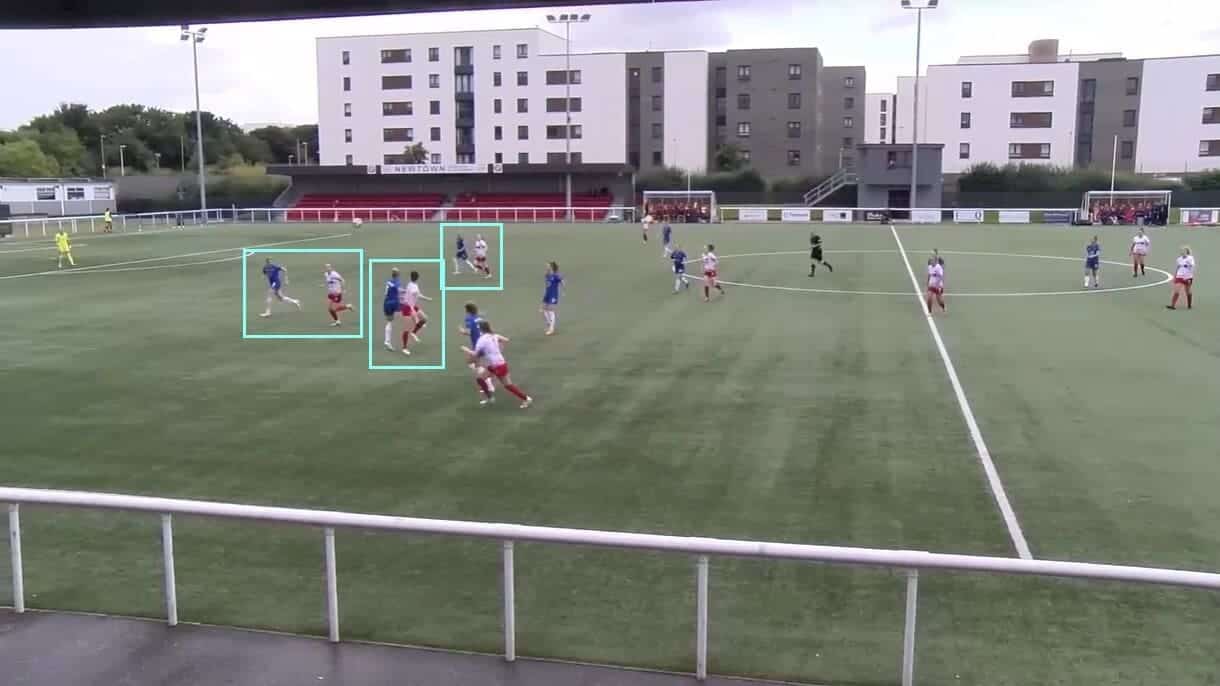
However, transitioning between a back four and a back three took a lot of work, and there were a few teething problems as the players at the back adjusted to their new roles and the demands that were now being put upon them.
In their opening match against Spartans, for example, they used a player-to-player marking strategy. They ended up conceding a goal that will have disappointed them, given the ease with which it was constructed, with McLauchlan being beaten in the air by Rebecca Galbraith before the ball arrived at the feet of Alana Marshall behind her and was then sent towards Lauren Berman to put beyond Jenna Fife in the Rangers goal.
At no point in that sequence were Kathryn Hill, who was marking Marshall, or Nicola Docherty, tasked with staying tight to Berman, able to disrupt the passes, and so, even though Rangers defeated Debbi McCulloch’s side 6-1 in the end, the defensive side of things was clearly a work in progress and would require more patience from those in the stands and time on the training ground to ensure that chances like this did not become too common.
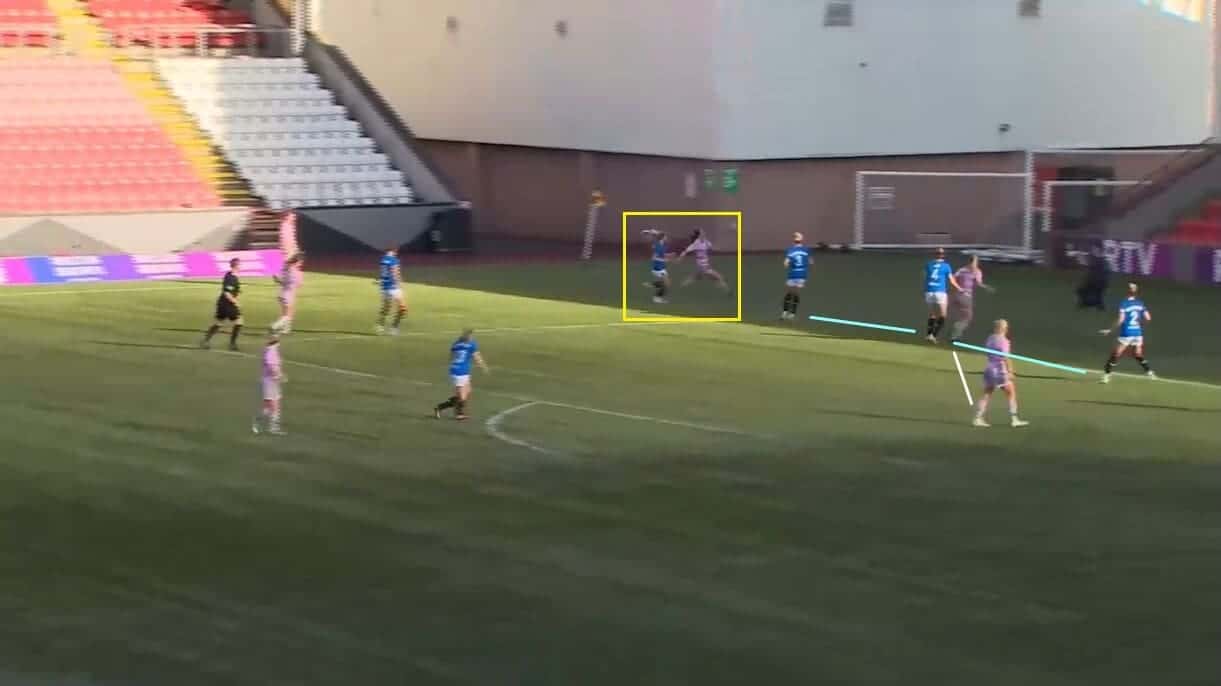
As the season has progressed, that hard work has paid off, with Rangers looking a lot more at home with the new formation as the weeks have gone by and now seeing the benefits of a back three as they have tried to make themselves harder to beat.
In this case, Partick Thistle’s Imogen Longcake has possession on the far side of the field, and Rangers have again looked to put pressure on her through McAulay.
However, whereas that would have left a gap open between her and the rest of the defensive line last season, the additional defender has meant that that gap can now be filled more efficiently, and Rangers can create numerical advantages against the central target players, as they have done here against Kodi Hay and critical threat Cara Henderson.
The latter is a player that has to be marked tightly in any situation, with her possessing speed and awareness around the field and not often needing a second invitation to test opposing defences.
So the fact that Longcake’s attempted cross went out of play here and Henderson was not brought into the game was a big positive for Rangers, and once again showed how they have worked on the issues that came up last season and have tried to make themselves a lot harder to score against.
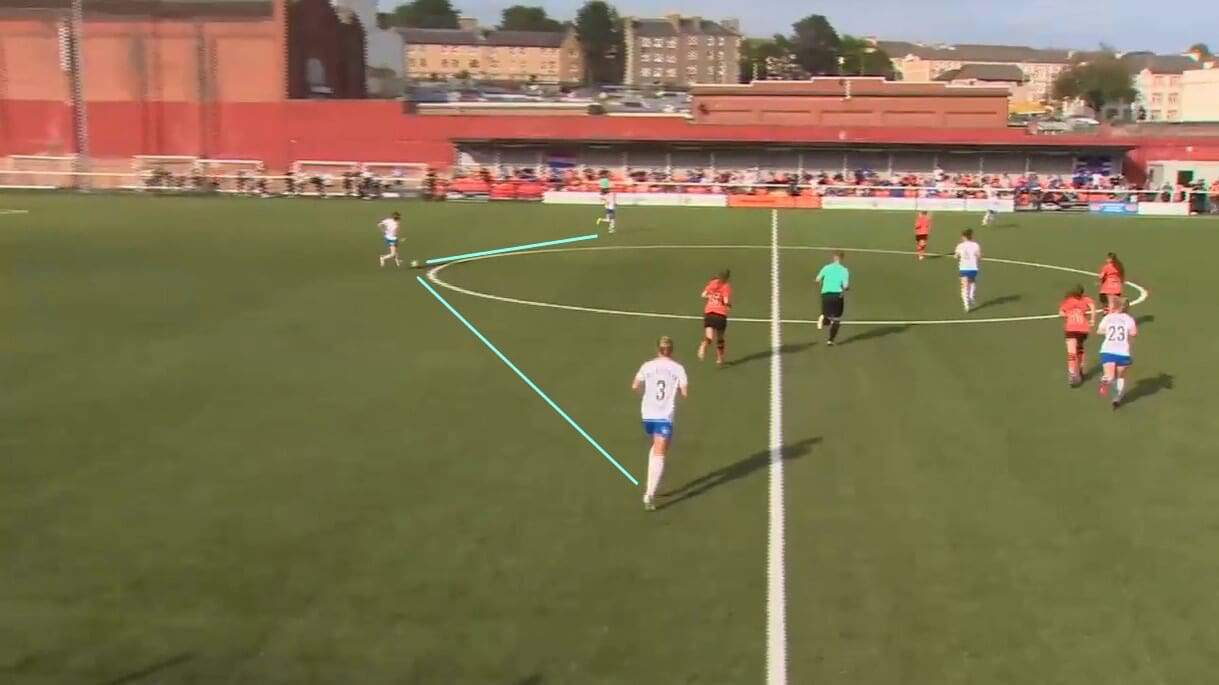
The decision to play McLauchlan and Docherty in the back three has raised a few eyebrows among the media and Rangers fans alike, given that both are at their best when moving up the field and not when pinned back inside their own half.
However, there is a reason that Potter has opted to use them in these roles rather than specialist centre-backs, and that is that they both have a substantial range of passing and so will be able to find more angles and teammates, both through cross-field switches and through short ground passes up the wings.
They will also tend to pass from slightly higher up the pitch, moving forward in the way that full-backs do (and as both have done here against Dundee), increasing the accuracy of their passes and not allowing too many to fail to find their intended target.
Therefore, again, it is all about giving the team options when building from the back and ensuring that, whatever they are faced with, they will have a way of playing progressively and will be more satisfied than they might have otherwise been.
Against the top teams
The ultimate challenge for Rangers Women, though, is whether they can improve against their fellow title contenders because all six of their draws and their two defeats last season came against Glasgow City, Celtic or Hearts Women (the last of whom ran the top three very close).
Therefore, if they are to be seen as genuine challengers for silverware this time, they will need to find a way of improving that record, and not doing so could lead to them experiencing a repeat of last season’s anguish.
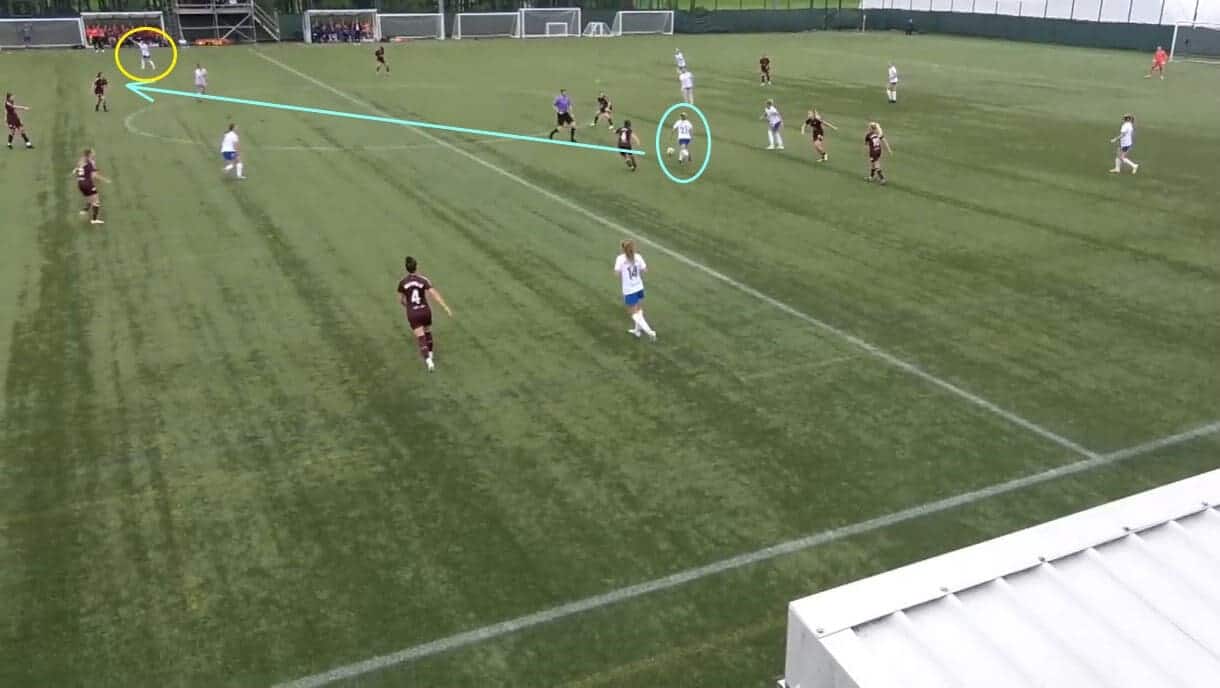
With that in mind, it has been promising that they have already faced Glasgow City and Hearts, with fans and writers alike having a chance to assess their title credentials, and the fact that they drew against Glasgow and narrowly defeated Hearts will encourage both the players and those in the stands that they can compete and win matches against the stronger teams in the division.
Their use of wing-backs has helped to make that possible because it has enabled them to make quicker passes and execute slicker transitions as soon as they win the ball in deeper areas.
This is because those charged with shifting the ball around the pitch have yet to need to wait for a full-back to get up the wing and to offer a passing option, as the wing-backs on either side have already been there.
As a result, situations like this have been standard, with Maclean again playing the part of connecting the play and sending an early ball out towards McLeary on the far side of the pitch.
Hearts last season would have had time to get back and set their defensive line up, sealing off the central routes and forcing teams to utilise the wings where possible, and they would have then had time to get out to McLeary and to prevent her from moving the ball forwards here.
However, because of the speed of Rangers’ passing and McLeary getting into position early. Rangers were able to turn their counterattack into a shot on goal (something that has really developed this season, with 82.6% of their counterattacks resulting in a shot this season compared to 45.7% in 2022/23). Only a wayward effort from the Rangers wing-back prevented this from providing a serious test for goalkeeper Charlotte Parker-Smith.
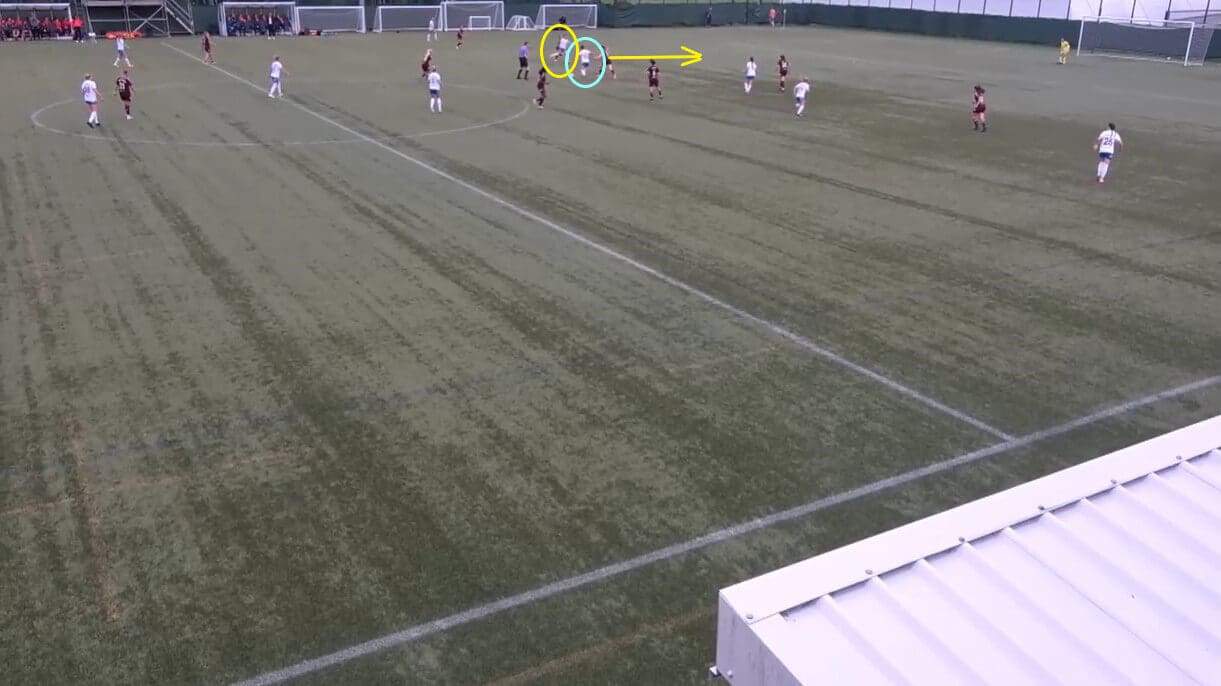
The fact that Rangers now have attackers in their team who naturally stay more central has also positively affected their play against more formidable teams in the league, as it has allowed them to manipulate opposing defensive lines and use their high backline tactics against them.
Again, Hearts are one of those that last season prided themselves on how they set up to contain threats. Still, Rangers this season have a player in Hardy who can force gaps to open up through her positioning and movement, tempting them to leave their lines and create routes for the ball to travel through.
In this case, not keeping their discipline and falling into the trap cost Eva Olid’s side, with Hardy instantly turning and playing the ball through to Cornet at the earliest available opportunity, and this was not something that they did much of last season, and so shows again how Potter’s tactics have allowed them to be more threatening in games that they might have struggled in previously.
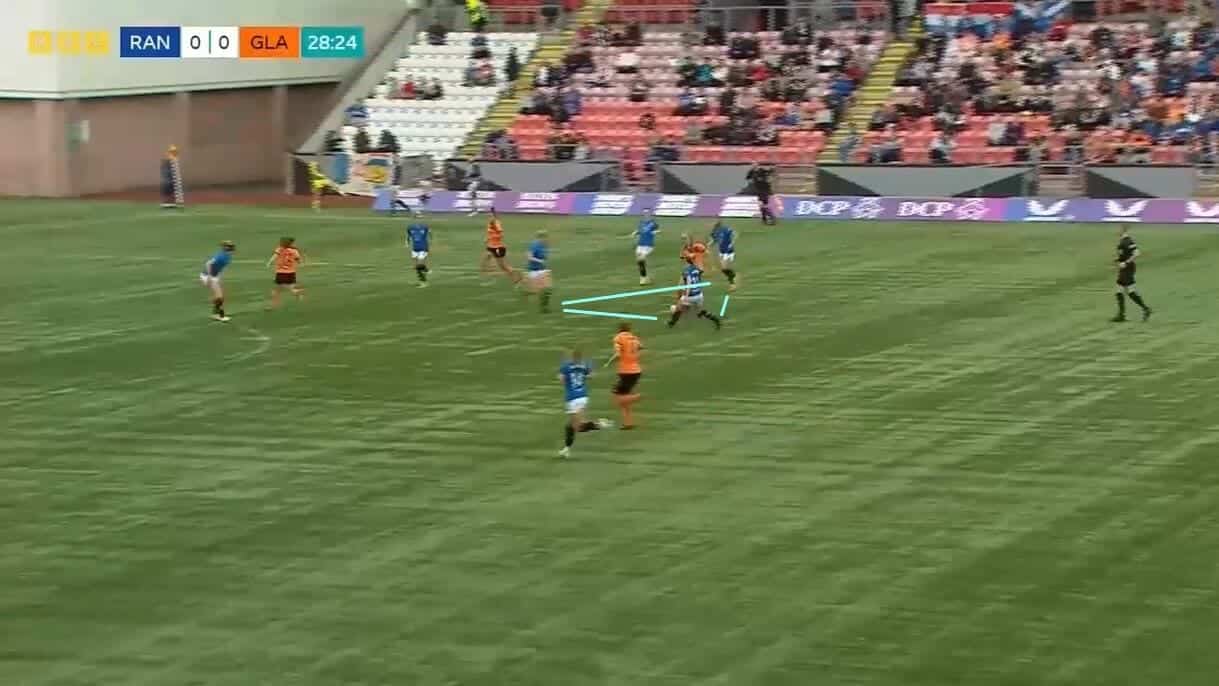
Something prominent in Rangers’ play under Thomson was pressing, and the scout report has already shown how they did a lot once the ball was inside their third.
However, Potter has elevated it, and now there is a demand for the whole team to work hard out of possession to keep the ball as far away from their goal as possible. This is important to do against any team in the division, but it is vital against the other title-chasing teams.
In this case, it prevented Glasgow City’s Scotland winger Lauren Davidson from taking the ball too far up the field. It cut off any passing options she might have had, with the trio of Maclean, Cornet and Belgian defender Michelle Colson instantly recognising her threat and teaming up to extinguish it.
The defending champions have started this season in good form, with Davidson picking up where she left off (she scored 28 league goals in the 2022/23 campaign), whilst striker Brenna Lovera has proven to be a formidable opponent following her arrival over the summer from NWSL side Chicago Red Stars, so isolating their key threats is critical. The fact that Rangers were able to do that here again showed that they this season have what it takes mentally and tactically to compete with those around them in the league table.
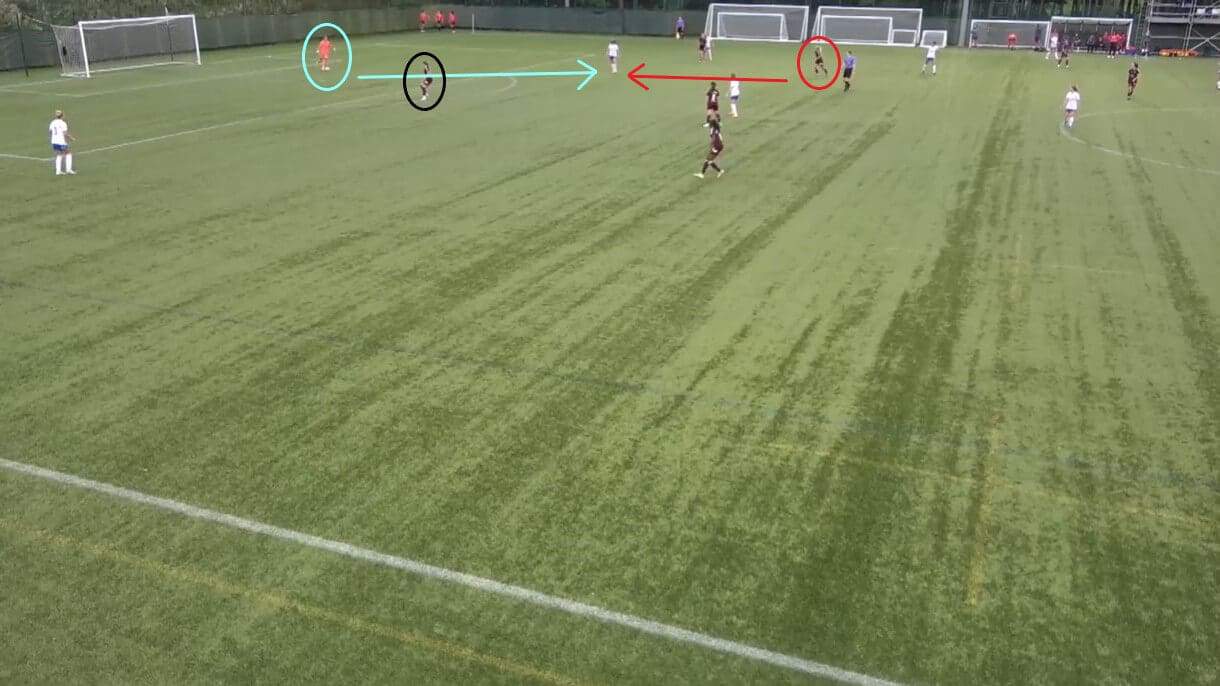
Despite these positives, it is worth remembering that Potter’s Rangers is still a work in progress and that it will take time for them to get used to her game plan. Therefore, there should be an expectation for mixed results and a few rough edges to their play, and some things will take more time to iron out than others.
One thing that has already proven to be a problem area is their ability to pass out from the back, which is something that they clearly want to persevere with and which they feel will allow them to play the possession-based football that Potter wants to see, but which they have struggled at times to execute correctly.
Against Hearts, there were a few occasions when they gave the ball away in poor areas and allowed Olid’s side to create easy goalscoring opportunities. This situation saw them concede a goal as Fife passed to Hill, who was quickly closed down by Katie Lockwood, and fellow striker Kathleen McGovern was able to find the back of the net.
It was a goal that didn’t mean anything in the context of the match, with it arriving late on in the game and proving to be nothing more than a consolation for the Edinburgh side. Still, against other teams and in matches where Rangers do not manage to be as clinical with their own chances, it could be that these moments cost them valuable points.
Therefore, whilst Rangers do look like a much more fluid side with the ball, some areas of their play still need tidying up, and that shows how they are not the finished article just yet.
Conclusion
In conclusion, this tactical analysis has detailed Rangers Women and why they look refreshed and ready for a tilt at the SWPL 1 title this season. The analysis has drawn comparisons between their tactics during the 2022/23 campaign and the current one, showing why they perhaps slipped up during Thomson’s final campaign in charge and why Potter has them believing once again that they can get their hands on silverware.
It is important not to criticise the work done by Thomson, given that his tenure did include major successes and lots of positive memories, but the impact made by Potter in the early stages of her career has been nothing short of outstanding, with her bringing in a style that suits the vast majority of the squad and that is producing performances and results that were missing last season.
They have played a game more than both Glasgow City and Celtic, so any genuine conclusions surrounding their title chances must be retained until those two have caught up (although that game in hand does see them face off against each other, meaning that one or both will drop points). However, the early signs are very positive.
Rangers as a team should be pleased with what they have done so far and be excited about their potential because, if they keep performing the way they are, anything could be possible for them this season.




Comments